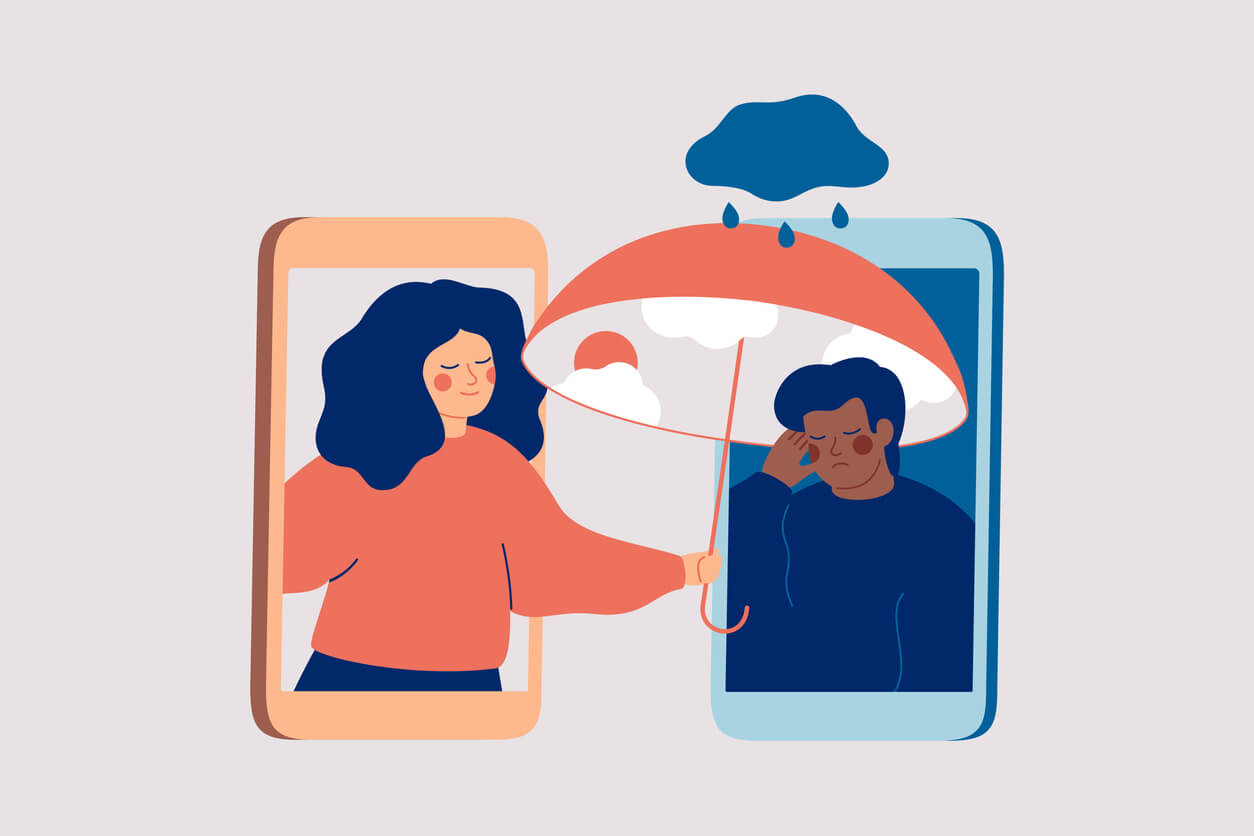When education focuses on putting students at the center of their learning, the care for their well-being sharpens. Each learner deals with different personal scenarios like family problems, financial difficulties, feelings of isolation, social pressure, anxiety, or stress from studying. Sometimes it is teachers who help their students express their most complex emotions by creating an environment of safety so that they can process and understand them. Educational technology can facilitate these advances for students to continue learning without detriment to their health.
Socioemotional learning (SEL) guides students by applying social, emotional, attitudinal, and behavioral skills to succeed in their training. This process develops self-knowledge competencies vital to their life trajectory. Each student responds uniquely in a teaching environment, so understanding their state allows for stronger interpersonal relationships. One way to incorporate SEL in the classroom is to resort to educational, technological resources for learning.
What support does educational technology provide?
The World Bank declares that EdTech (educational technology) enriches teaching by improving the management and delivery of education and can create new human connections among teachers, students, tutors, and communities. Initiatives that use educational technology must employ five principles that maximize participation: have a clear purpose and objectives, reach all students, empower teachers, involve a system of partners, and use data to consolidate strategies, policies, and programs effectively.
Typically, to provide mental health services to its students, educational institutions select an SEL package. However, the needs of the students must be identified first. Teacher Alice Dominguez of Mater Dei Catholic High School in Chula Vista, California, uses the example of her students, commenting that acquiring these resources generated more burden to comply with its stipulations, so it was first essential to have meaningful discussions on how to relieve the burden and use the exercises that help deal with it. She invites you first to assess what works for each curriculum, especially for the students training in it. Sometimes you only need to use methodologies particular to each case.
For those who detect that their curricula should incorporate certain specific applications, there are several options today in the market.
What is being done in Latin America?
Some EdTech applications for students’ mental health in Latin America can be downloaded or used on websites. Currently, tools have been created that include:
-
The mobile application Cuida tu ánimo (Care for your spirit) was developed in Chile to facilitate access to tools for the timely intervention and prevention of depression and risk of suicide among learners aged 15 to 29 after the effects of the pandemic. The initiative is led by Doctor Vania Martínez, Director of the Millennium Nucleus to Improve the Mental Health of Adolescents and Youth, Imhay. Access is free. Through a questionnaire, the user’s symptoms are evaluated; based on their answers, they are directed to a program designed to deal with their symptoms.
-
The web app YOLO, derived from Yóllotl, which means “heart” in Nahuátl, was created by the Department of Psychiatry and Mental Health (DPSM) and the Department of Biomedical Informatics (DIB) of the Faculty of Medicine of the Universidad Nacional Autónoma de México (UNAM). This virtual emotional assistant helps determine symptoms of depression or anxiety. It provides mental health psychoeducation and strategies through six modules to regulate emotions for at-risk learners. Students in six undergraduate degree programs and the institution’s postgraduate medical specializations can attend their mental health.
-
The cross-platform mobile app Cuidándome (Caring for me) at the University in Talca, Chile, allows people to learn to manage their moods through practices and exercises and assess their discomforts with a questionnaire. The platform is designed especially for the population with some symptoms of depression or anxiety. Without the diagnosis, they do not have coverage; in this way, they can manage what happens to them without increasing the symptoms or triggering a mental health pathology.
-
The mobile application with artificial intelligence Human Place, developed by researchers from the Universidad Técnica Federico Santa María (USM) in Chile, educates, monitors, and helps reflect on habits that influence the quality of life. This self-knowledge platform is designed to be used in the morning and evening with planning and meditation practices that calm the mind in the morning and promote gratitude and restful sleep at night. The cognitive assistant can suggest alternatives for people to receive help or decide to be treated by the appropriate health personnel.
-
The mobile application SoyBienestar (My Well-being) of the Department of Psychology of the Universidad Iberoamericana Ciudad de México (IBERO) allows users to self-manage and improve their mental health. By asking about mood, setting goals, and helping with daily emotions, the app provides strategic paths to emotional well-being. Doctor Angélica Ojeda García, responsible for the project, indicated that it is a resource for people to relearn and modify some habits consciously.
-
Four students at Prepa Tec in Mexico City created the VS Beat Your Thoughts application. The platform, focused on mental health care, specifically for depression and anxiety, presents a guide endorsed by professionals, with exercises that lead to calmness. When crisis management is appropriate, it has the specialist contact information.
The research “Mobile applications in mental health: perception and perspectives in Argentina” showed that their population would be willing to incorporate new technologies into psychotherapeutic treatments. In addition, it was concluded that these resources could be an accessible option in different geographical locations, even with a lower educational level, and helpful in health centers.
What can educational institutions do?
There are different ways schools and teachers can support students and promote mental health care. Some strategies include designing a multidisciplinary curriculum that incorporates the subject inclusively. Psychoeducation consists of disseminating information about healthy lifestyles, emotional reactions, and warning signs; it is relevant for students to know and face their emotions. Support through groups or peers is also recommended as a strategy that involves the academic field and brings in support from others who can recognize other symptoms. Raising awareness and preventing stigmatization within the classroom helps promote empathy.
The resources implemented most frequently in the wake of the pandemic, such as psychological care lines, emergency assistance, and face-to-face help, have been indispensable. Equally, it is crucial to use platforms that have online wellness controls.
Educational institutions that focus on well-being stimulate students’ motivation and self-confidence, generate a sense of belonging, encourage engagement, and improve indices of academic performance, retention, and graduation rates.
It is necessary to prioritize mental health and identify which tools help the students and bring added value to their lives, considering that the selected applications have adequate protection of personal data, information on data disposal, and the necessary student consent. The diversity of available options, their versatility, and the creation of new instruments and methodologies can lead to more awareness and humane approaches. What educational technologies do you use to inspire mental health care for your students?
Translation by Daniel Wetta
This article from Observatory of the Institute for the Future of Education may be shared under the terms of the license CC BY-NC-SA 4.0 
)
)


)